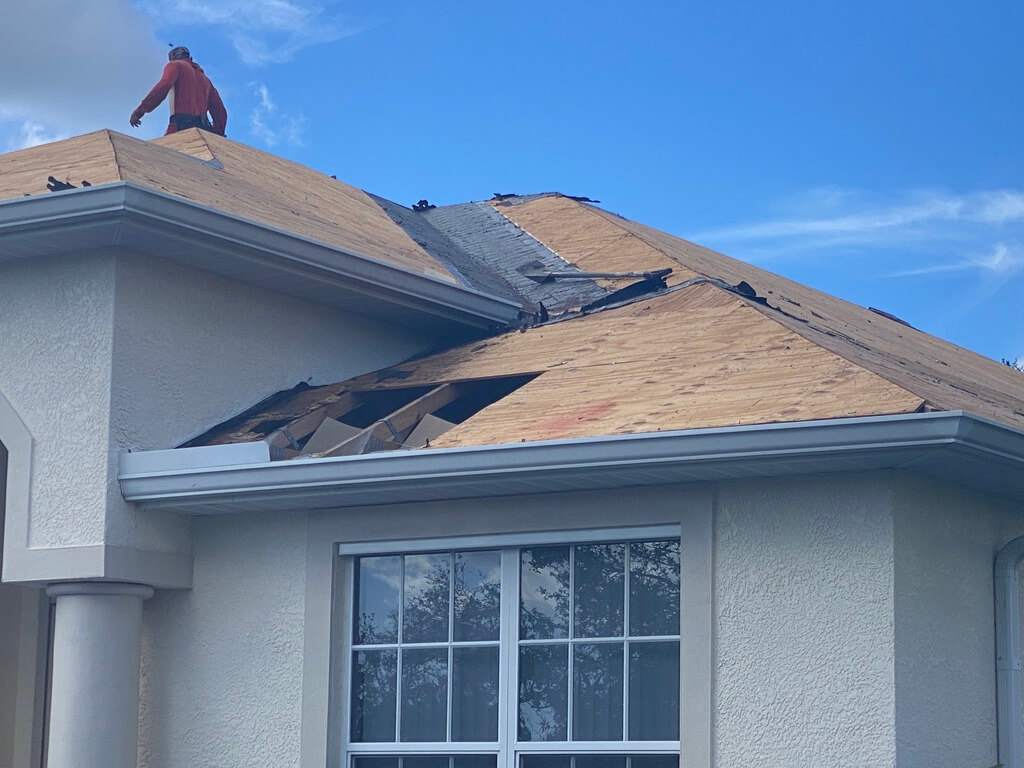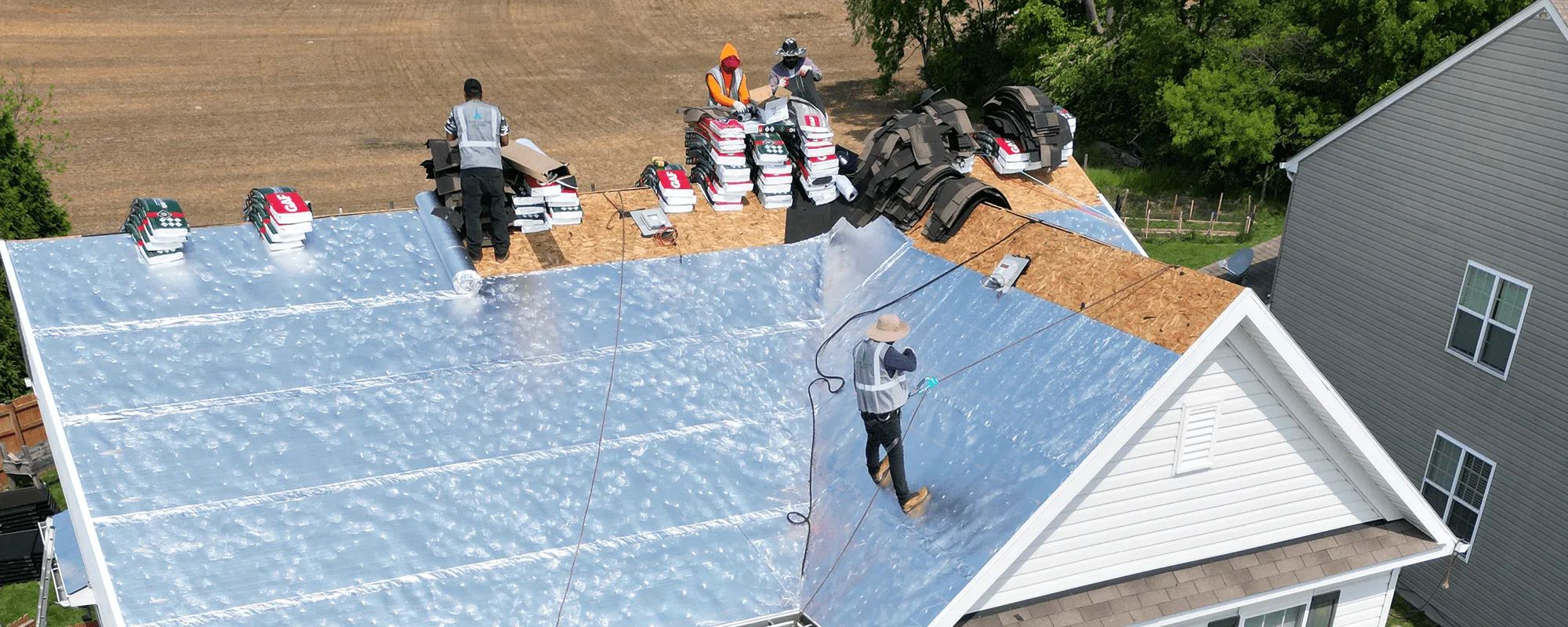The Total Overview to Roof Covering Replacement: Expenses, Products, and A Lot More
In the realm of home improvement, roofing substitute stands as a crucial undertaking that demands cautious factor to consider of different components, consisting of expenses, materials, and installation processes. Understanding the subtleties of roofing jobs is vital for house owners seeking to balance performance and aesthetics. This overview will illuminate the diverse sorts of roofing materials available, together with the variables that can significantly affect general costs. As you navigate via these complexities, you may find that the key to an effective roof covering substitute lies in a couple of often-overlooked methods. What are those techniques, and how can they affect your job?
Comprehending Roof Costs
When thinking about a roof replacement, numerous house owners discover themselves coming to grips with the complexities of linked costs. Properly estimating these prices is important to ensure an effective task and avoid unanticipated financial problems. Trick elements affecting roofing costs consist of the dimension of the roof covering, the intricacy of the design, and the labor entailed.
The geographical location additionally plays a considerable duty in determining costs. Labor prices can vary widely depending upon neighborhood market conditions, while permit charges and building policies may enforce added expenses. It is necessary for home owners to conduct complete research study and get multiple quotes from respectable specialists to guarantee they receive a fair rate.
Furthermore, the timing of the project can affect prices. Seasonal need fluctuations frequently lead to higher costs during peak seasons, while off-season setups may yield cost savings. House owners need to likewise take into consideration the potential for lasting value with energy-efficient choices, which might include higher in advance costs however can cause lowered energy bills over time.
Inevitably, comprehending these expense elements will certainly equip house owners to make educated choices concerning their roof replacement, stabilizing quality and budgetary constraints properly.
Types of Roofing Materials
Choosing the ideal roof material is important for making certain durability, looks, and energy effectiveness. Different roof products are readily available, each with special properties, benefits, and considerations.
Asphalt shingles are one of the most preferred choice because of their affordability and simplicity of installation. They come in a variety of colors and styles, making them suitable for several home styles. Steel roofing, a growing option, offers phenomenal durability and resistance to weather aspects, while additionally being energy-efficient, showing heat far from the home.
Clay and concrete tiles supply a distinctive appearance and are extremely durable, usually enduring half a century or more. They can be larger and may call for added structural assistance. Slate, recognized for its style and durability, is an additional costs alternative, yet its high expense and weight can be too high for some homeowners.
Timber shingles and trembles deal a natural visual but can be at risk to rot and fire unless dealt with. In addition, synthetic roofing items, including rubber and plastic compounds, imitate the appearance of standard materials while offering improved durability and reduced maintenance.
Choosing the appropriate material depends on individual choices, budget, and the details requirements of the home.
Aspects Affecting Replacement
Several elements enter into play when thinking about a roof covering substitute, significantly impacting both the decision-making procedure and total prices. The age and condition of the existing roof covering are key factors to consider; roofs typically have a lifespan of 20 to three decades, and deterioration can require a substitute faster. Climate condition in the area also affect choices, as areas susceptible to heavy rains, snow, or severe warm may need even more long lasting materials.
In addition, local building ordinance and laws can enforce specific needs that influence both material option and installation techniques. House owners need to also consider their spending plan, as roof materials vary extensively in cost. Asphalt roof shingles often tend to be more budget friendly than metal or slate roof.
Another vital factor is the architectural style of the home, which might limit material alternatives to preserve visual communication. Labor expenses, affected by regional market rates and the complexity of the roofing design, need to additionally be factored into the overall budget. Finally, the schedule of products can affect the timeline and expense of substitute, especially during peak seasons or supply chain interruptions.
Setup Process Summary
After figuring out the factors influencing the demand for a roofing substitute, understanding the installment process is important to making certain an effective end result. The installation procedure usually starts with a comprehensive assessment of the existing roofing system to determine any kind of underlying concerns. This step is critical, as it informs the required preparations and products.

Complying with the removal, the roof deck is inspected and fixed as required to ensure a strong structure for the brand-new roof. Ultimately, a brand-new underlayment is installed to supply an extra layer of moisture defense.
The last involves the setup of the new roof materials, whether roof shingles, ceramic tiles, or steel panels. Expert roofer will very carefully straighten and protect each component, making certain proper ventilation and sealing to stop leaks. Completing the installment procedure consists of an extensive inspection to validate that all components satisfy high quality standards, making certain the durability and efficiency of the new roofing.
Maintenance and Longevity Tips
To ensure the longevity of your newly set up roofing, routine maintenance is necessary. Throughout these examinations, check for noticeable signs of wear, such as broken roof shingles, rusted flashing, or loose rain gutters.
Keep your roofing clean by eliminating particles like fallen leaves, branches, and moss. These products can catch dampness and cause rot or mold, compromising the integrity best site of your roofing system. Furthermore, ensure that your gutters are clear and working correctly to promote water drain, minimizing the danger of water damages.
Think about working with a specialist roofer for extensive examinations and upkeep jobs. They can recognize potential problems that might not be promptly apparent to an untrained eye. Roofing Replacement. Additionally, if your roofing system is subjected to extreme weather, such as heavy snow or hail, examine it afterward for any damages.
Verdict
In summary, successful roof replacement pivots on a comprehensive understanding of prices, product alternatives, and influencing aspects. Various roof products offer distinct advantages and disadvantages, demanding careful consideration based on individual requirements and choices.
